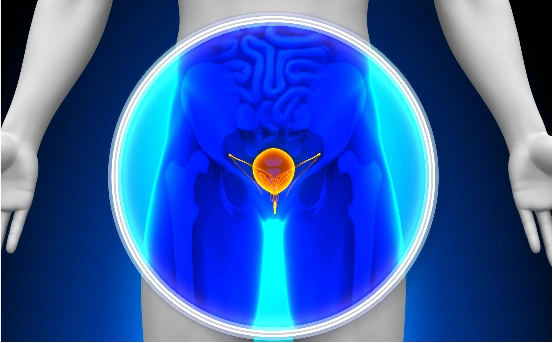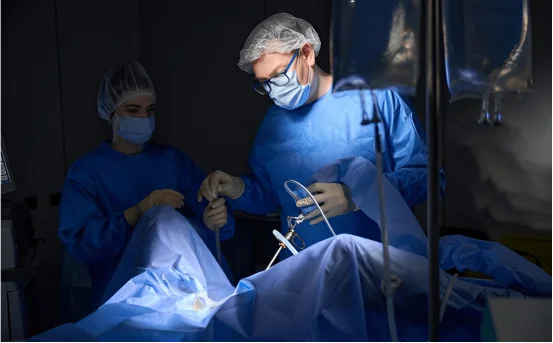Diagnosis for bladder outlet incision surgery can be a frustrating and uncomfortable condition, especially when it severely impacts your ability to urinate normally. In some cases, a minimally invasive procedure called bladder outlet incision surgery also known as bladder neck incision (BNI) or transurethral incision of the bladder neck (TUIBN) is recommended to relieve this obstruction. But how is the need for this surgery diagnosed?
Urinary problems can be both physically uncomfortable and emotionally frustrating. Whether it’s difficulty starting urination, a weak stream, or the frequent urge to urinate especially at night these symptoms can significantly impact your quality of life. While these issues may seem minor at first, they can sometimes indicate a more serious underlying problem such as bladder outlet obstruction (BOO). Left untreated, BOO can lead to chronic urinary retention, infections, and even long-term damage to the bladder and kidneys.
What Is Bladder Outlet Obstruction?
Bladder outlet obstruction (BOO) refers to any blockage at the base or neck of the bladder that reduces or completely stops the flow of urine into the urethra. This can happen due to several underlying causes such as :-
-
Benign prostatic hyperplasia (BPH) :- enlarged prostate
-
Urethral stricture :- scarring or narrowing of the urethra
-
Bladder neck contracture :- narrowing at the bladder outlet
-
Congenital anomalies :- like posterior urethral valves (in children)
-
Post-surgical scarring :- especially after prostate surgery
When the obstruction is significant and doesn’t respond to medication or lifestyle changes, a surgical incision may be required to open the passage and restore normal urine flow.
Common Symptoms That Warrant Evaluation
People suffering from BOO often present with lower urinary tract symptoms (LUTS). These symptoms are a key starting point for doctors in deciding whether further diagnostic evaluation is necessary.
Typical symptoms include :-
-
Weak urine stream
-
Straining to urinate
-
Intermittent stream or dribbling
-
Incomplete bladder emptying
-
Frequent urination, especially at night (nocturia)
-
Urinary urgency or hesitancy
-
Recurrent urinary tract infections (UTIs)
In severe cases, urinary retention may occur, requiring emergency catheterization. If these symptoms are persistent and significantly affect quality of life, a diagnostic work-up is initiated.
Initial Evaluation: Medical History and Physical Exam
Detailed Medical History
The diagnostic process begins with a comprehensive review of symptoms, medical history, and past surgeries. The urologist may ask :-
-
How long have symptoms persisted?
-
Are symptoms worsening over time?
-
Any history of prostate issues or urinary surgeries?
-
Presence of diabetes or neurological diseases affecting the bladder?
A thorough history helps rule out neurogenic bladder, prostatitis, or medication-induced urinary symptoms.
Physical Examination
A digital rectal exam (DRE) is performed in men to check the size and consistency of the prostate. In both men and women, the abdominal and pelvic areas may be palpated to detect bladder distention or masses.
Key Diagnosis for Bladder Outlet Incision Surgery
If BOO is suspected, several diagnostic tests are conducted to confirm the presence and location of the obstruction and assess its severity. These include :-
Uroflowmetry
This is a simple and non-invasive test that measures the rate and pattern of urine flow. The patient urinates into a special device that records the volume and flow rate over time.
-
Findings suggestive of obstruction :- Low flow rate (less than 10-12 mL/sec) with prolonged voiding time.
Post-Void Residual (PVR) Measurement
Using ultrasound or a catheter, the volume of urine left in the bladder after urination is measured. A high PVR (>100 mL) may indicate incomplete bladder emptying due to outlet obstruction.
Cystoscopy
A flexible or rigid cystoscope is inserted into the urethra to visually examine the bladder neck, urethra, and bladder lining.
- It helps detect :-
-
-
Urethral strictures
-
Bladder neck contractures
-
Tumors or stones
-
Prostate enlargement pressing into the urethra
-
Cystoscopy also allows the surgeon to assess whether bladder outlet incision could be technically feasible and beneficial.
Urodynamic Studies
These are specialized tests that evaluate bladder function and pressure dynamics during filling and emptying. Urodynamic testing is often reserved for complex cases or when neurological causes are suspected.
-
It can differentiate between obstructive vs non-obstructive causes of poor urine flow.
-
May include pressure-flow studies to confirm true outlet obstruction.
Imaging Tests (Ultrasound, MRI, or CT)
-
Renal ultrasound :- Evaluates kidney health and rules out back pressure from chronic retention.
-
Pelvic ultrasound :- Assesses prostate size in men and checks for other pelvic anomalies.
-
MRI or CT scans :- Occasionally used in complex cases, especially if malignancy is suspected.
When Is Bladder Outlet Incision Surgery Recommended?
Bladder outlet incision surgery is considered when :-
-
There is confirmed obstruction on urodynamics or cystoscopy
-
Medical therapy (e.g., alpha-blockers or 5-alpha-reductase inhibitors) has failed
-
Symptoms significantly impair quality of life
-
There is recurrent urinary retention or infections
-
Structural causes like bladder neck contracture are diagnosed
The goal of the surgery is to make a small incision in the bladder neck or prostate to widen the passage, relieve pressure, and improve urine flow.
Conditions Commonly Treated by Bladder Outlet Incision
-
Bladder Neck Contracture :- Common after prostate surgeries like TURP or radical prostatectomy.
-
Primary Bladder Neck Obstruction :- Congenital or idiopathic narrowing in younger men.
-
Posterior Urethral Valves :- Seen in male children with urinary obstruction.
-
Mild Prostatic Enlargement :- When prostate is too small for TURP but still causing obstruction.
Importance of Accurate Diagnosis
A precise and timely diagnosis is critical to avoid complications like :-
-
Recurrent urinary infections
-
Bladder wall thickening or diverticula
-
Kidney damage due to back pressure (hydronephrosis)
-
Chronic urinary retention
Only after comprehensive evaluation can the urologist confirm if bladder outlet incision surgery is the right treatment option.
Conclusion
Diagnosing the need for bladder outlet incision surgery involves a multi-step process that includes clinical evaluation, symptom assessment, and a combination of advanced urological tests. The procedure is highly effective for select patients suffering from bladder neck obstruction, urethral narrowing, or post-surgical scarring.























